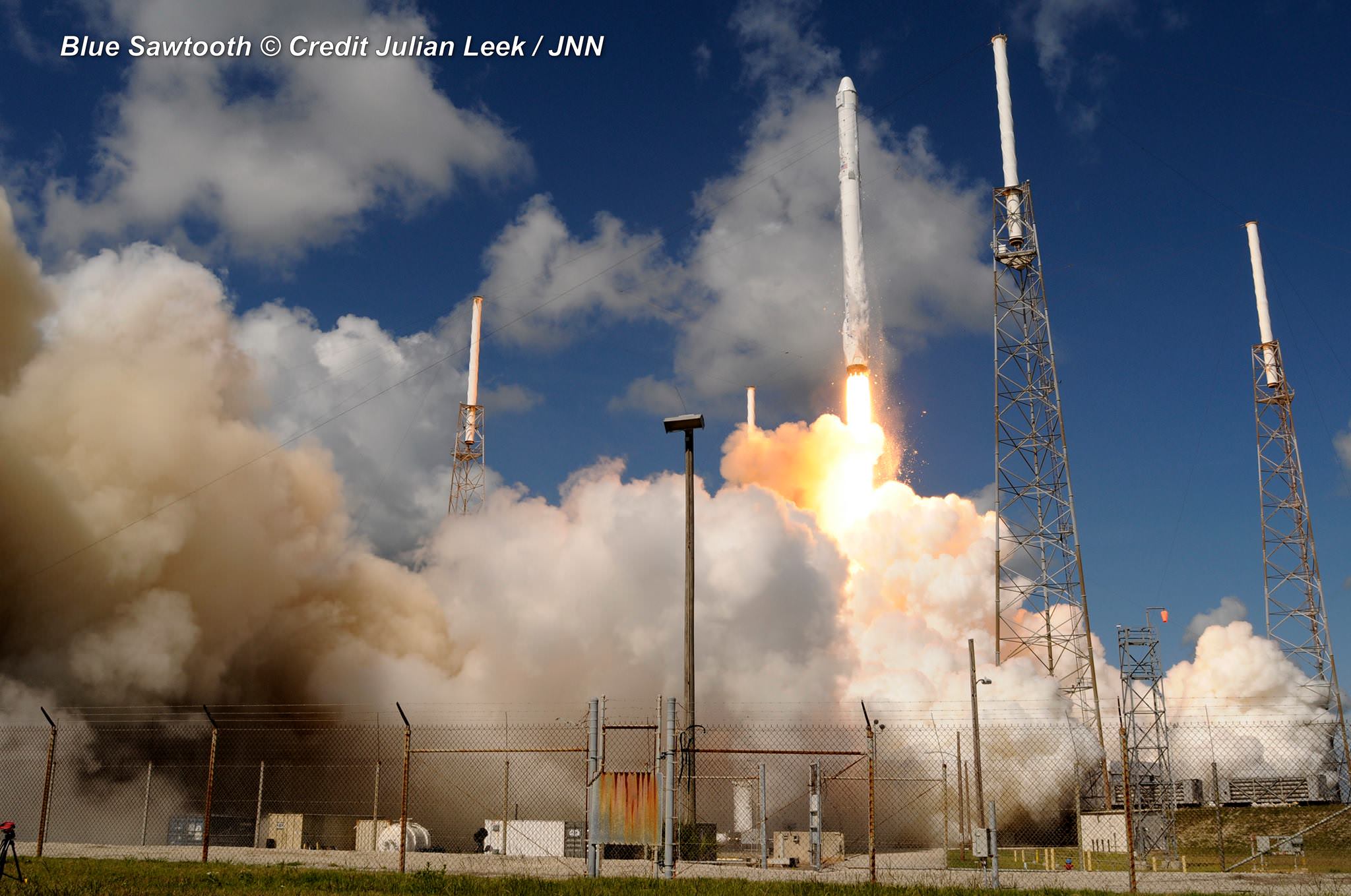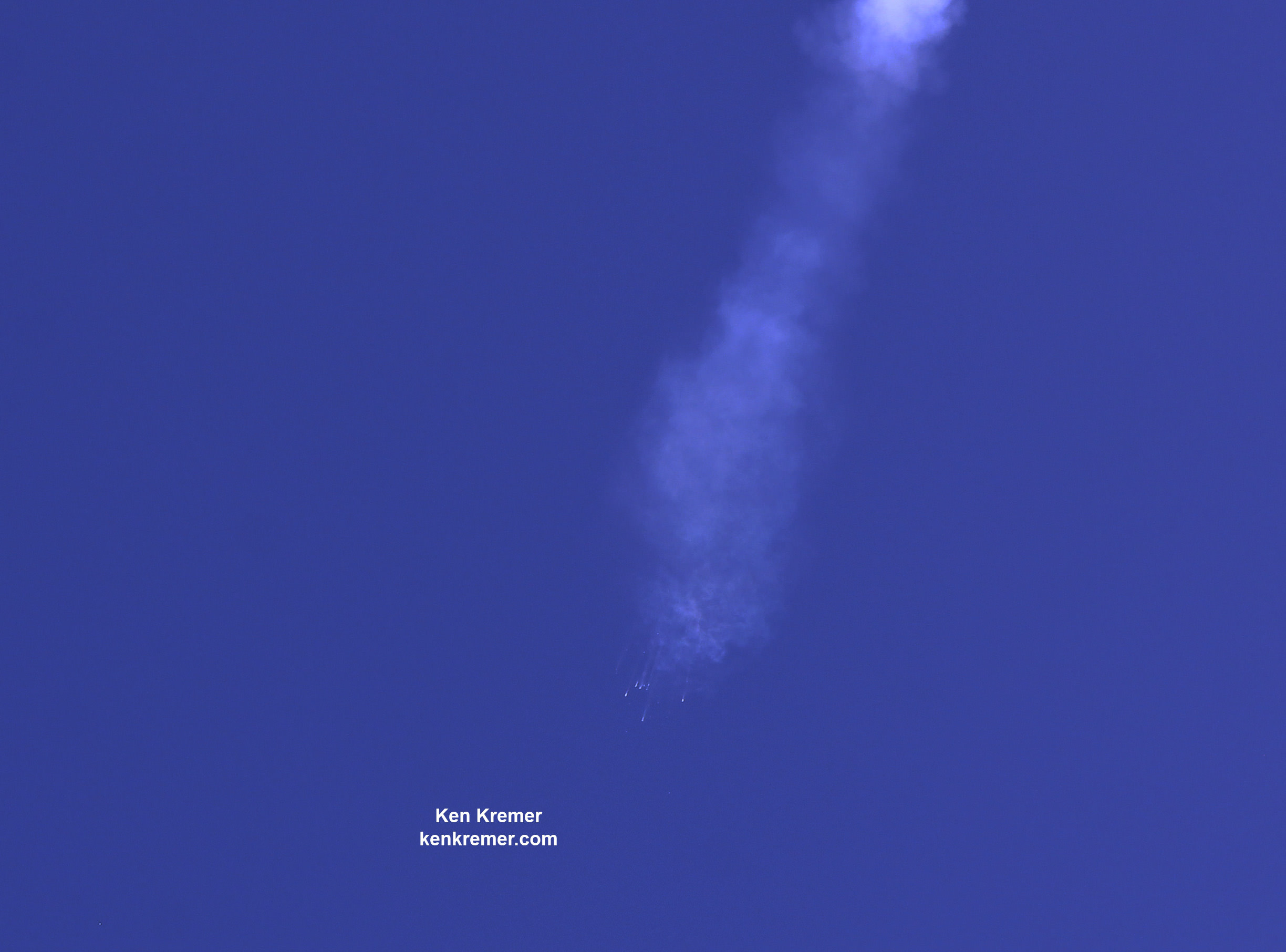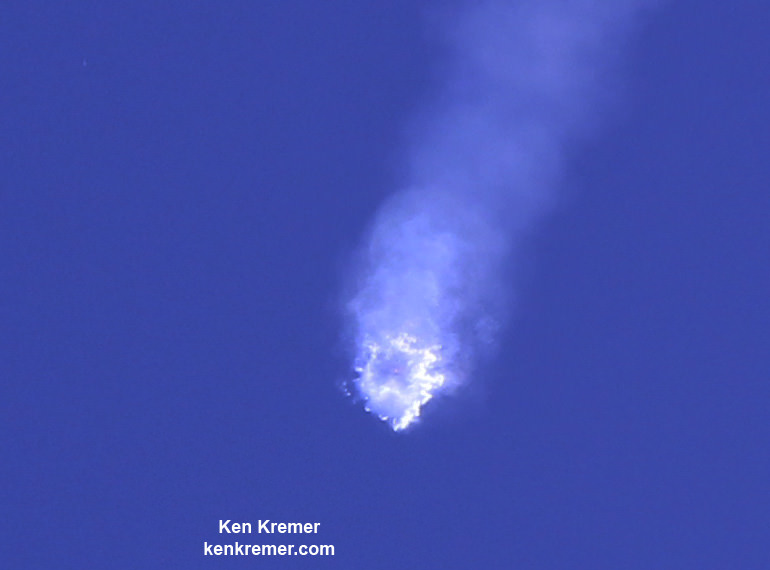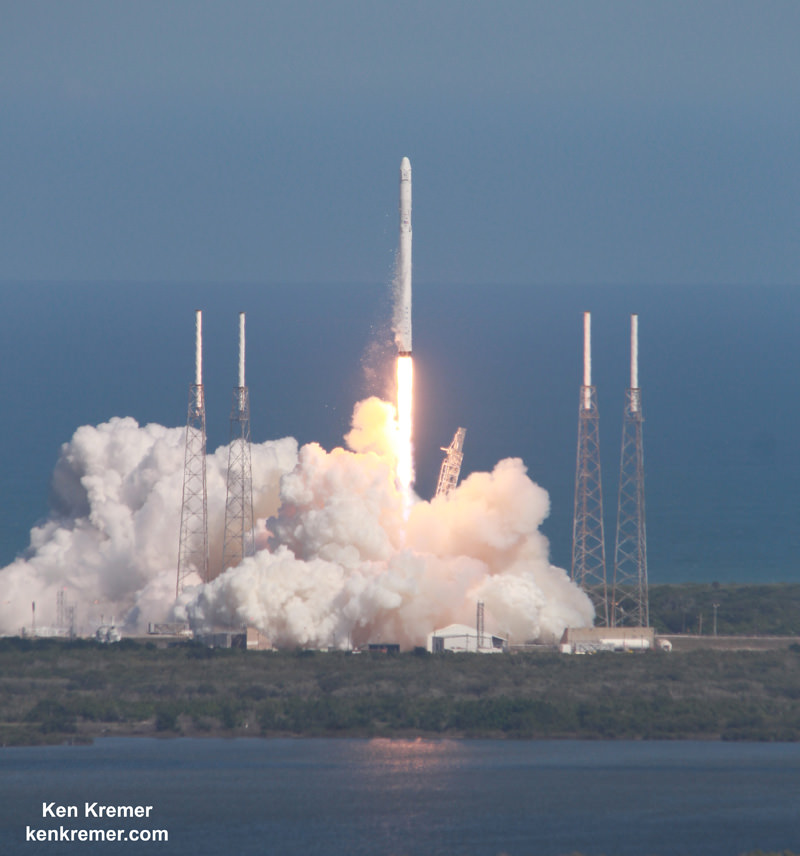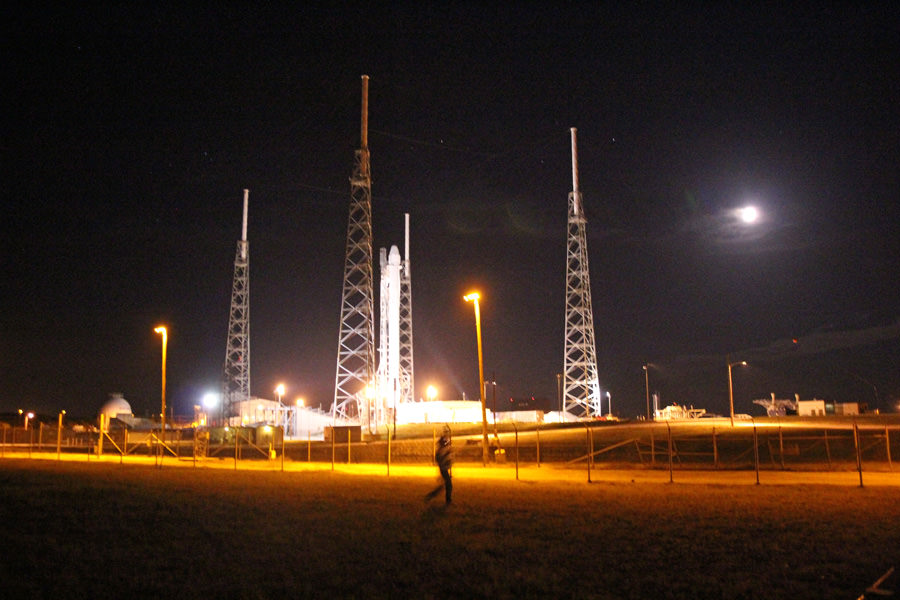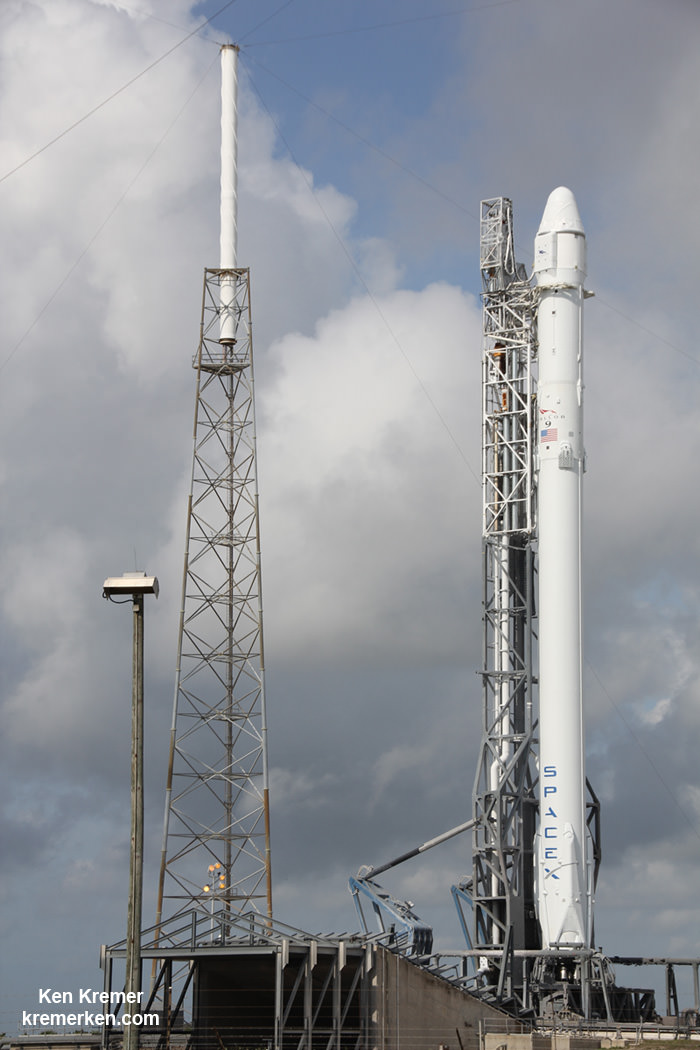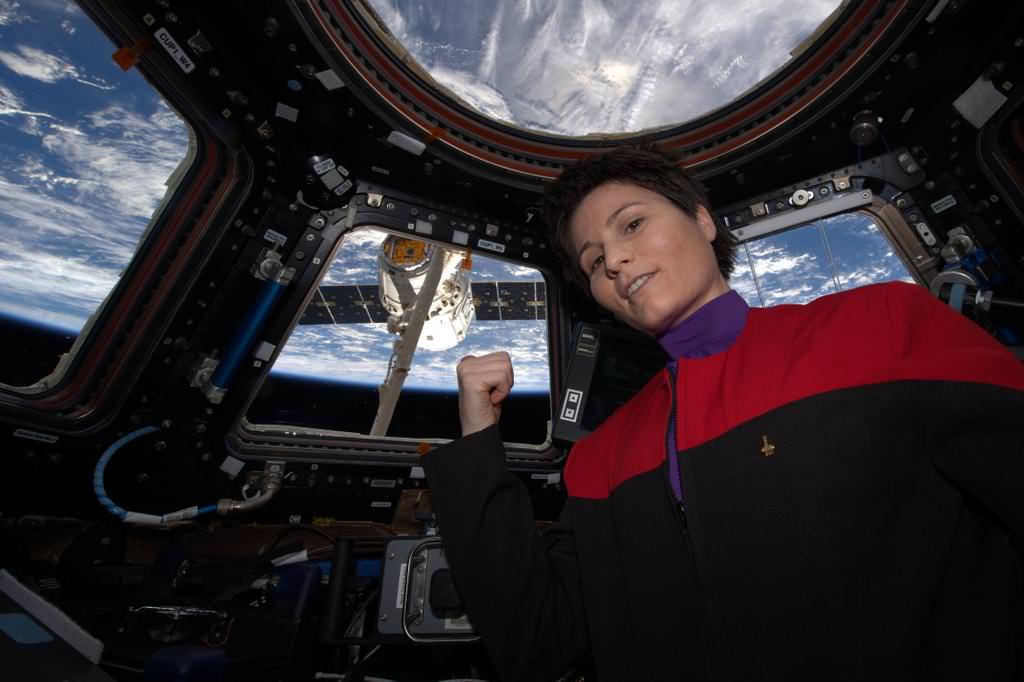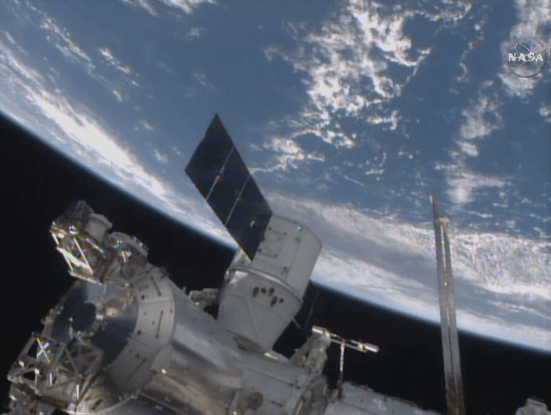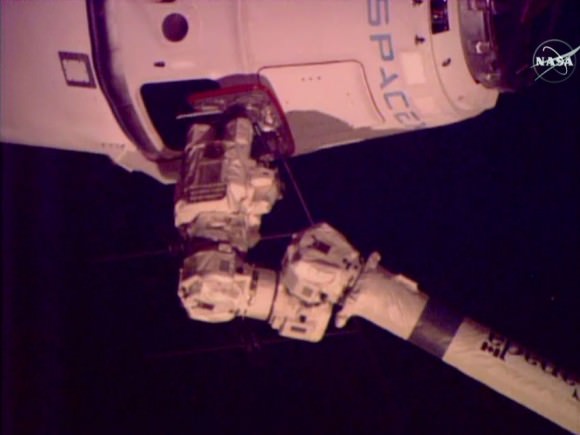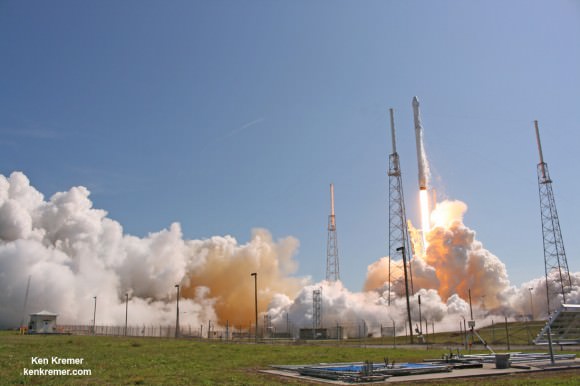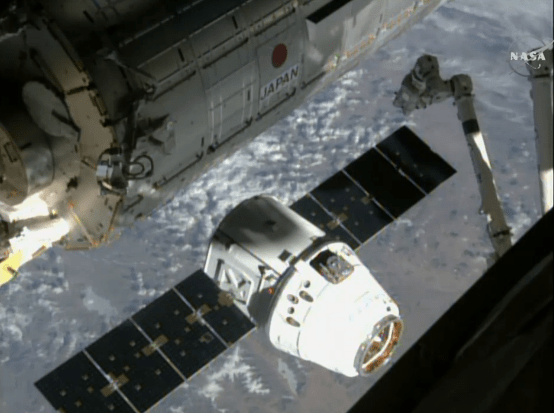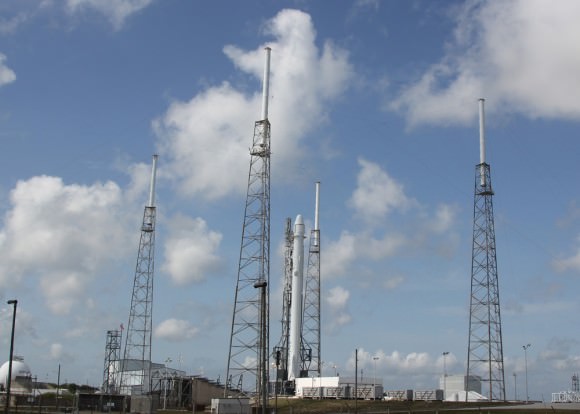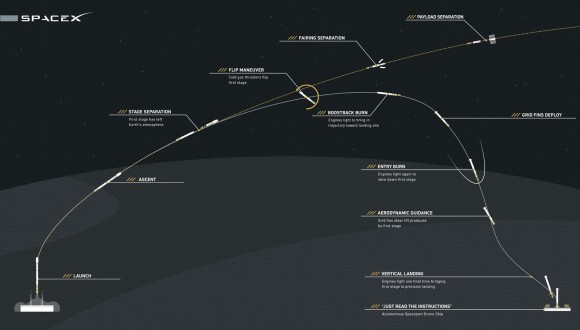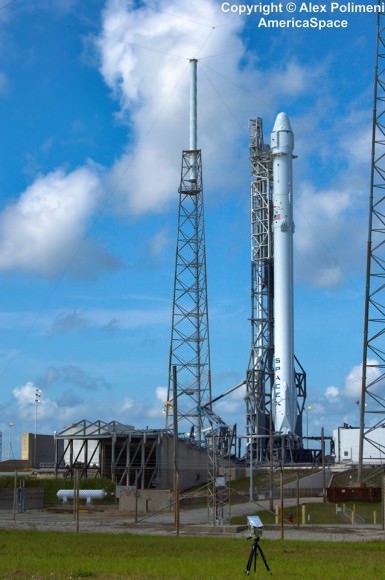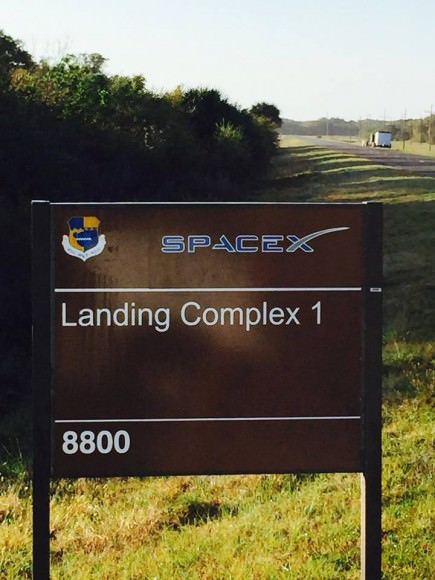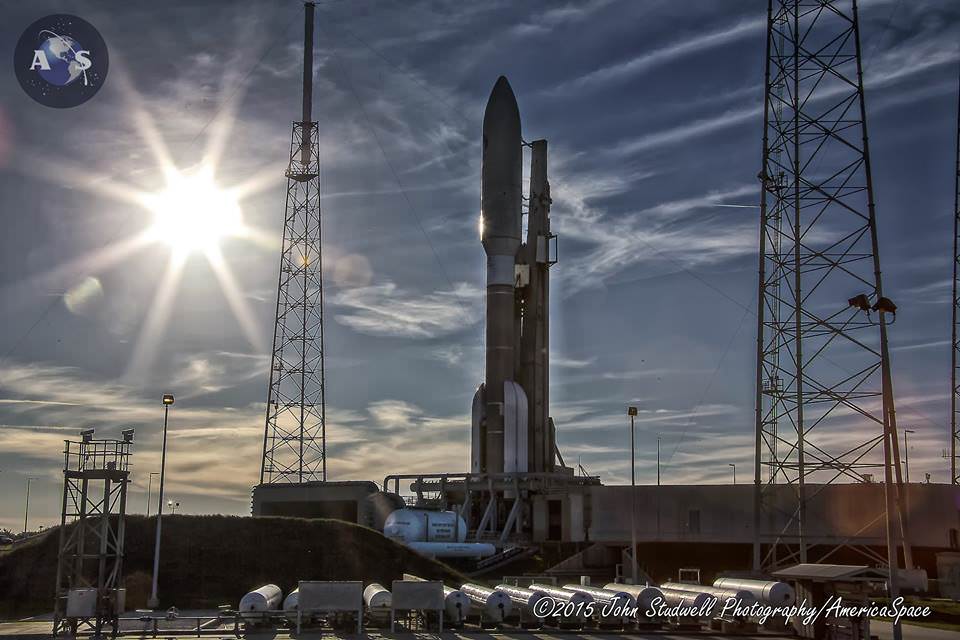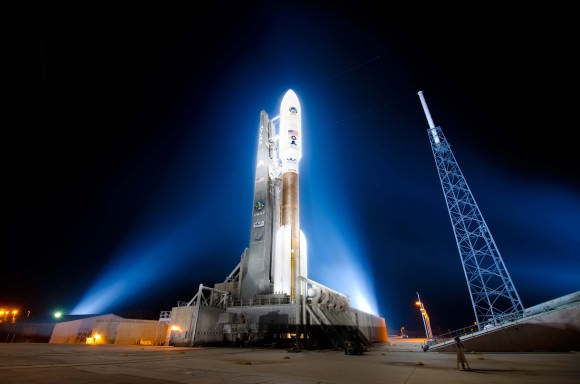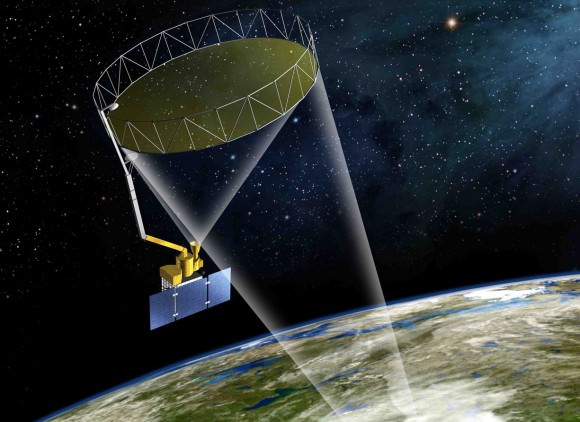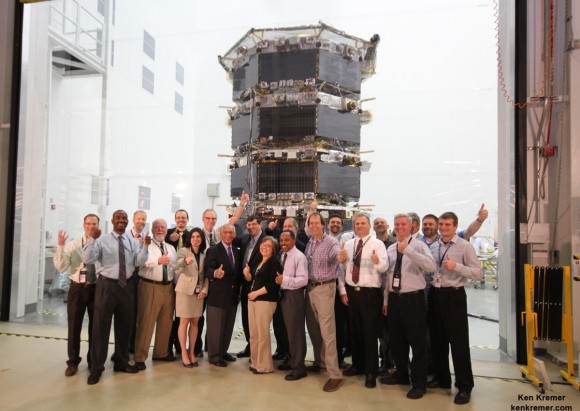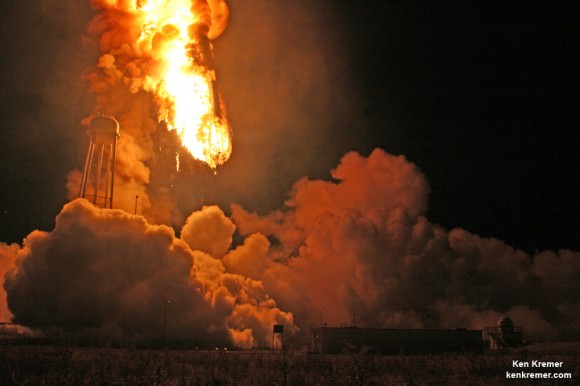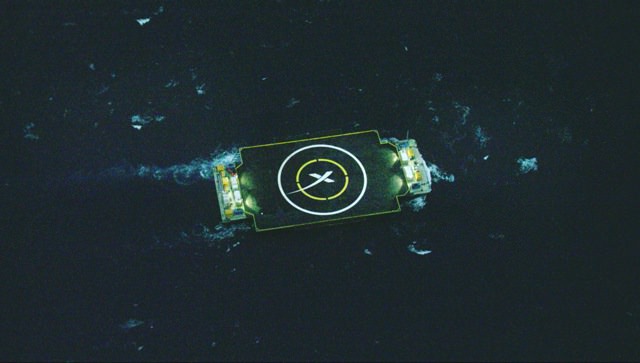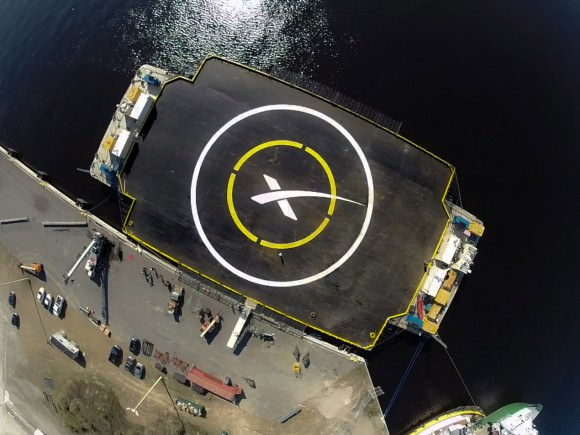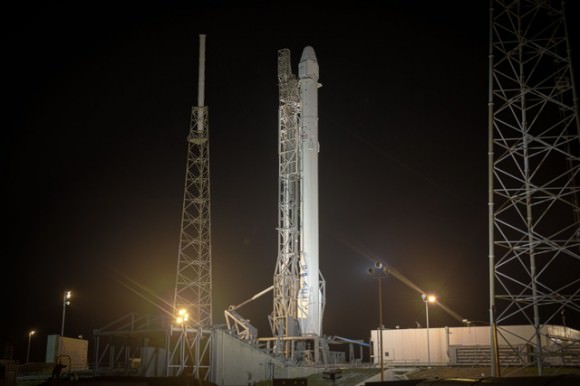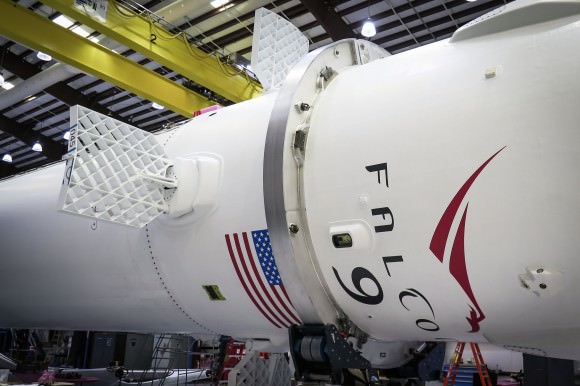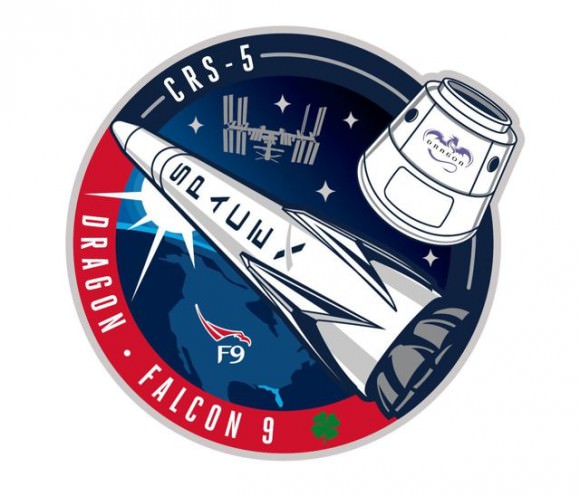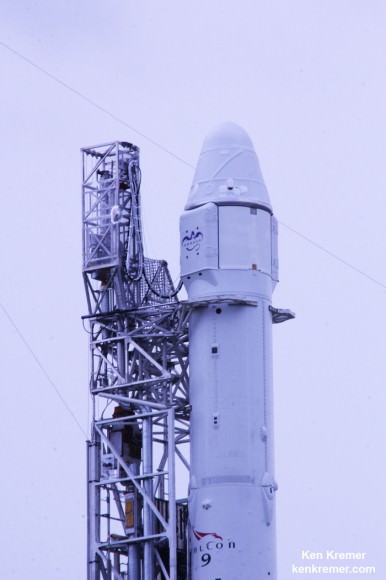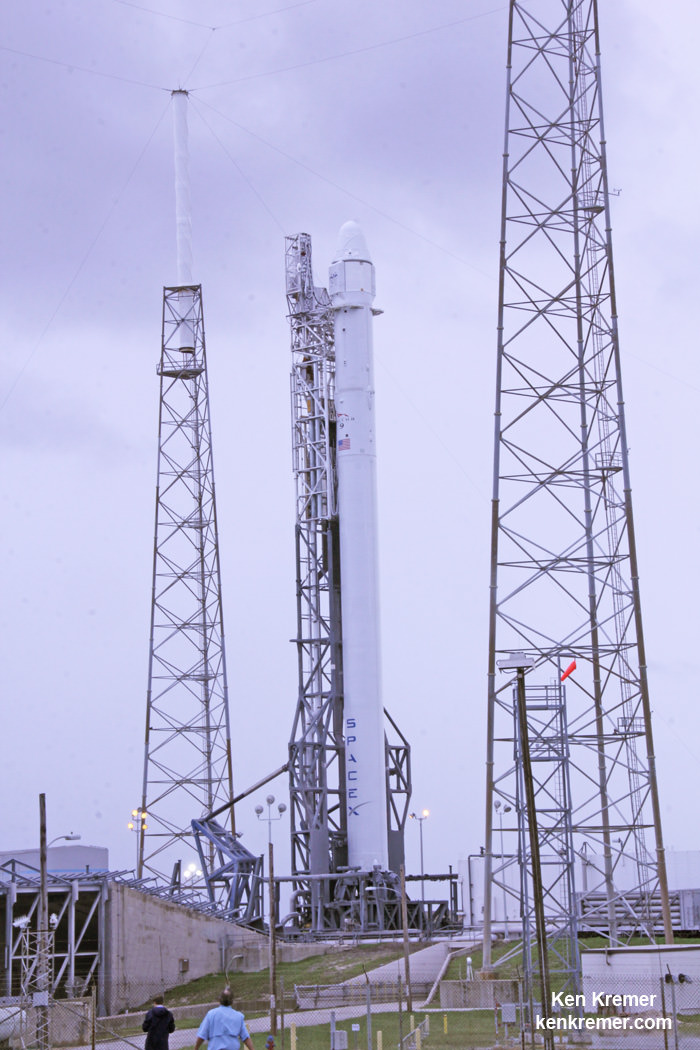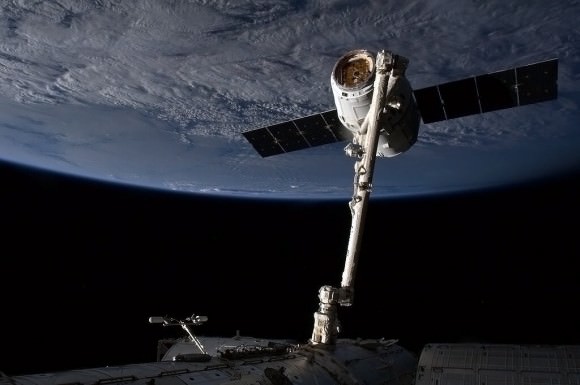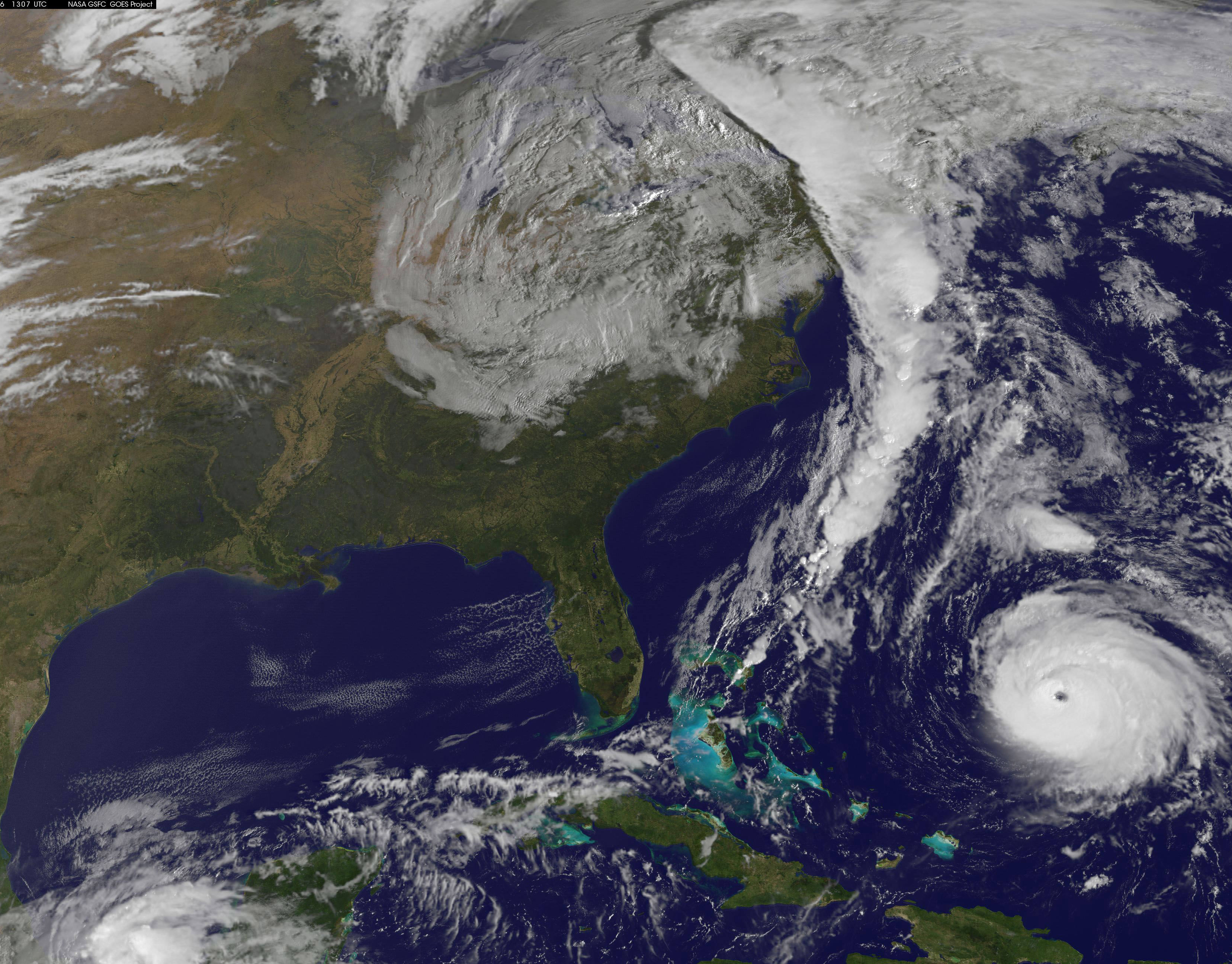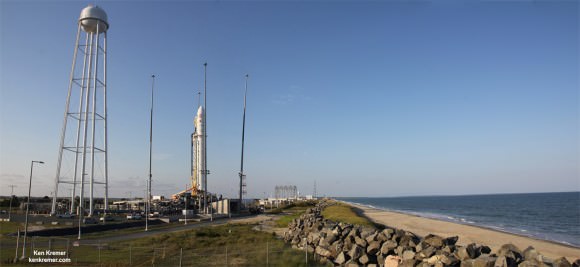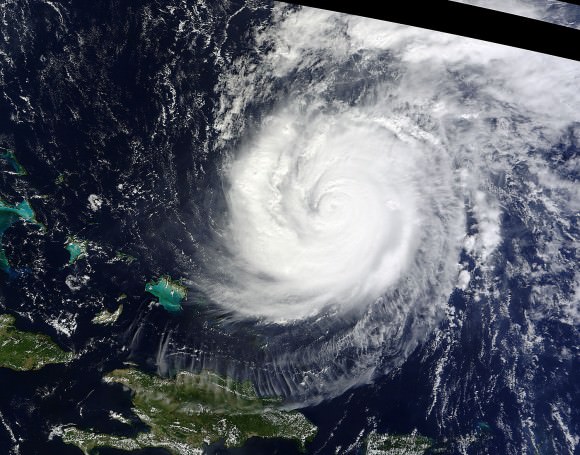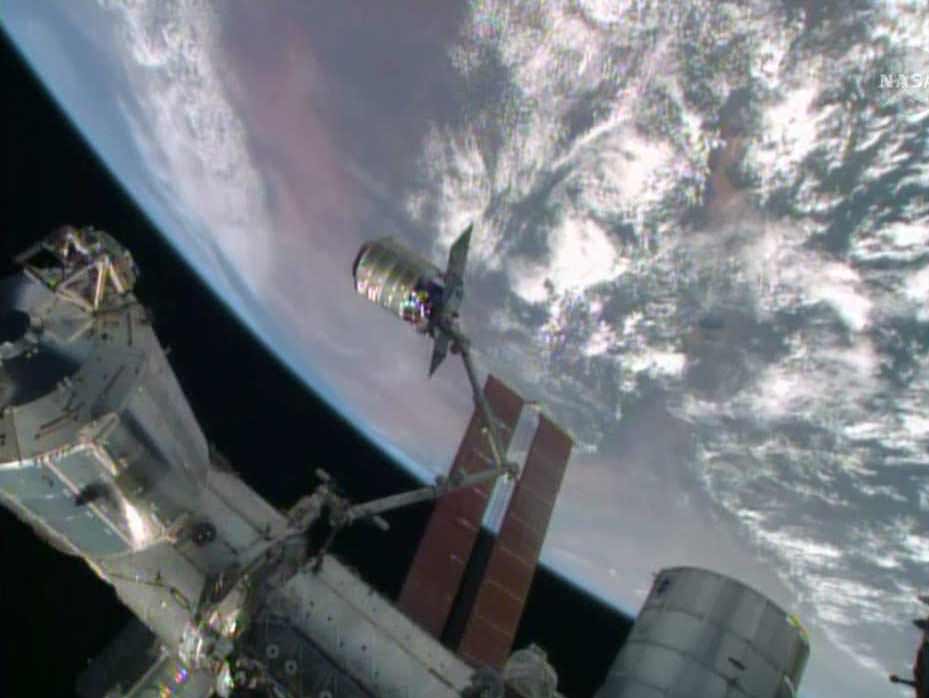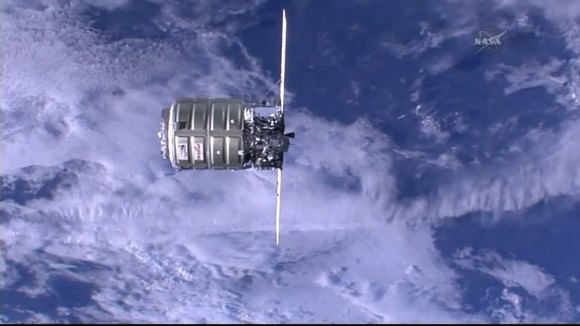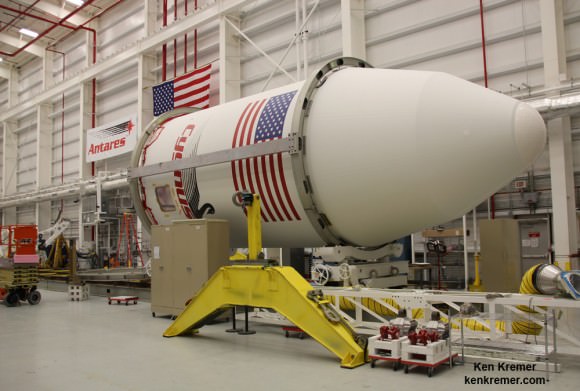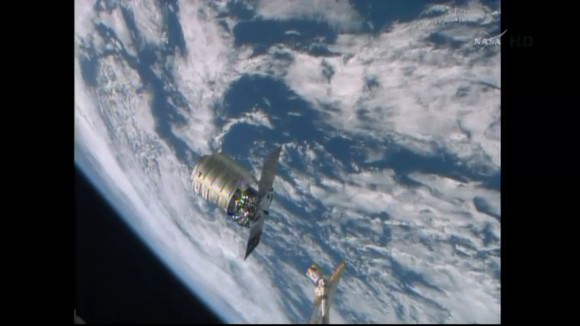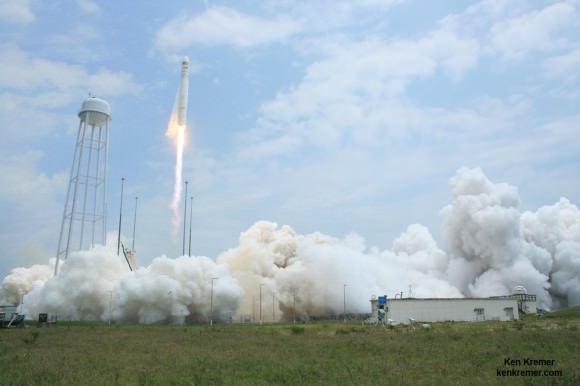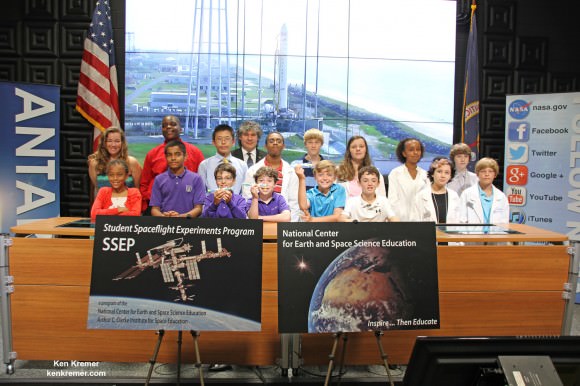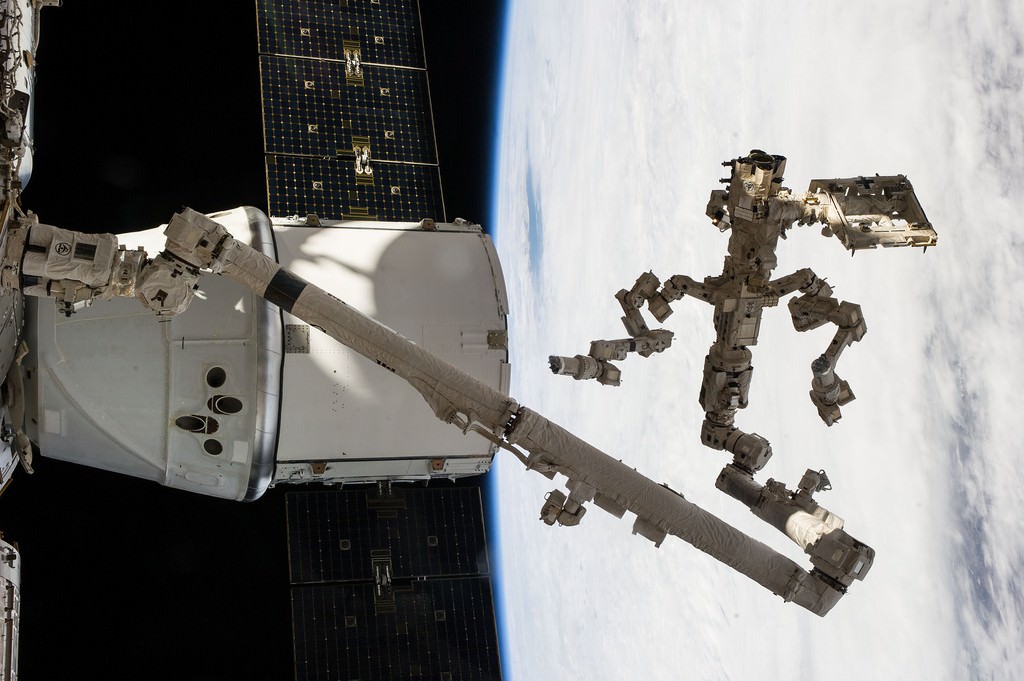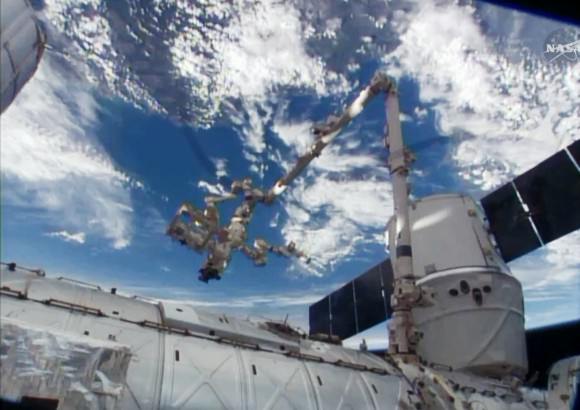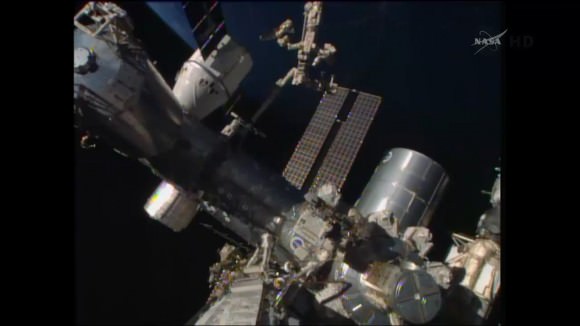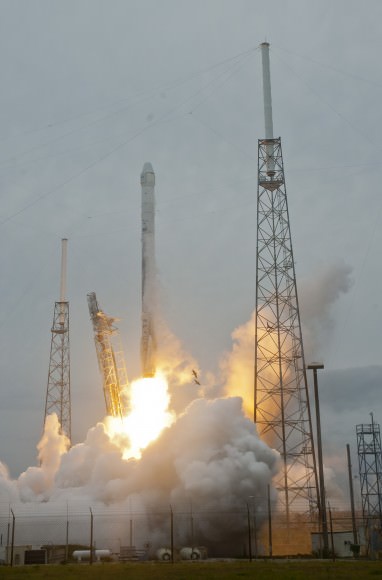KENNEDY SPACE CENTER, FL – SpaceX and NASA are diligently working to “identify the root cause” of the June 28 in flight failure of the firms Falcon 9 rocket, as the accident investigation team focuses on “flight data” rather than recovered debris as the best avenue for determining exactly what went wrong, a SpaceX spokesperson told Universe Today.
The SpaceX Falcon 9 booster broke up just minutes after a picture perfect blastoff from a seaside Florida launch pad on a critical mission for NASA bound for the International Space Station (ISS). It was carrying a SpaceX Dragon cargo freighter loaded with research equipment and new hardware to enable crewed spaceships to dock at the orbiting outpost.
The accident investigation team is still seeking the root cause of the launch failure through a complex fault tree analysis.
“The process for determining the root cause of Sunday’s mishap is complex, and there is no one theory yet that is consistent with the data,” said SpaceX spokesman John Taylor.
The accident investigation is in full swing both at the Cape and SpaceX headquarters in Hawthorne, Ca.
“Our engineering teams are heads down reviewing every available piece of flight data as we work through a thorough fault tree analysis in order to identify root cause.”
Hans Koenigsmann, SpaceX VP of Mission Assurance, is leading the accident investigation for SpaceX.

SpaceX is conducting an intense and thorough investigation with the active support of various government agencies including the FAA, NASA and the U.S. Air Force.
The SpaceX Falcon 9 and Dragon were destroyed just over two minutes after a stunning liftoff from Space Launch Complex 40 at Cape Canaveral Air Force Station in sunny Florida at 10:21 a.m. EDT.
The SpaceX CRS-7 cargo resupply mission to the ISS began flawlessly. The nine Merlin 1D engines powering the Falcon 9 rockets first stage were firing nominally at launch to produce about 1.3 million pounds of liftoff thrust for almost their entire duration.
However, approximately 139 seconds into the planned 159 second firing of the first stage engine, the majestic blastoff went awry as the upper stage of the vehicle experienced an as yet unexplained anomaly and suddenly exploded, vaporizing into a grayish cloud at supersonic speed and raining debris down into the Atlantic Ocean.
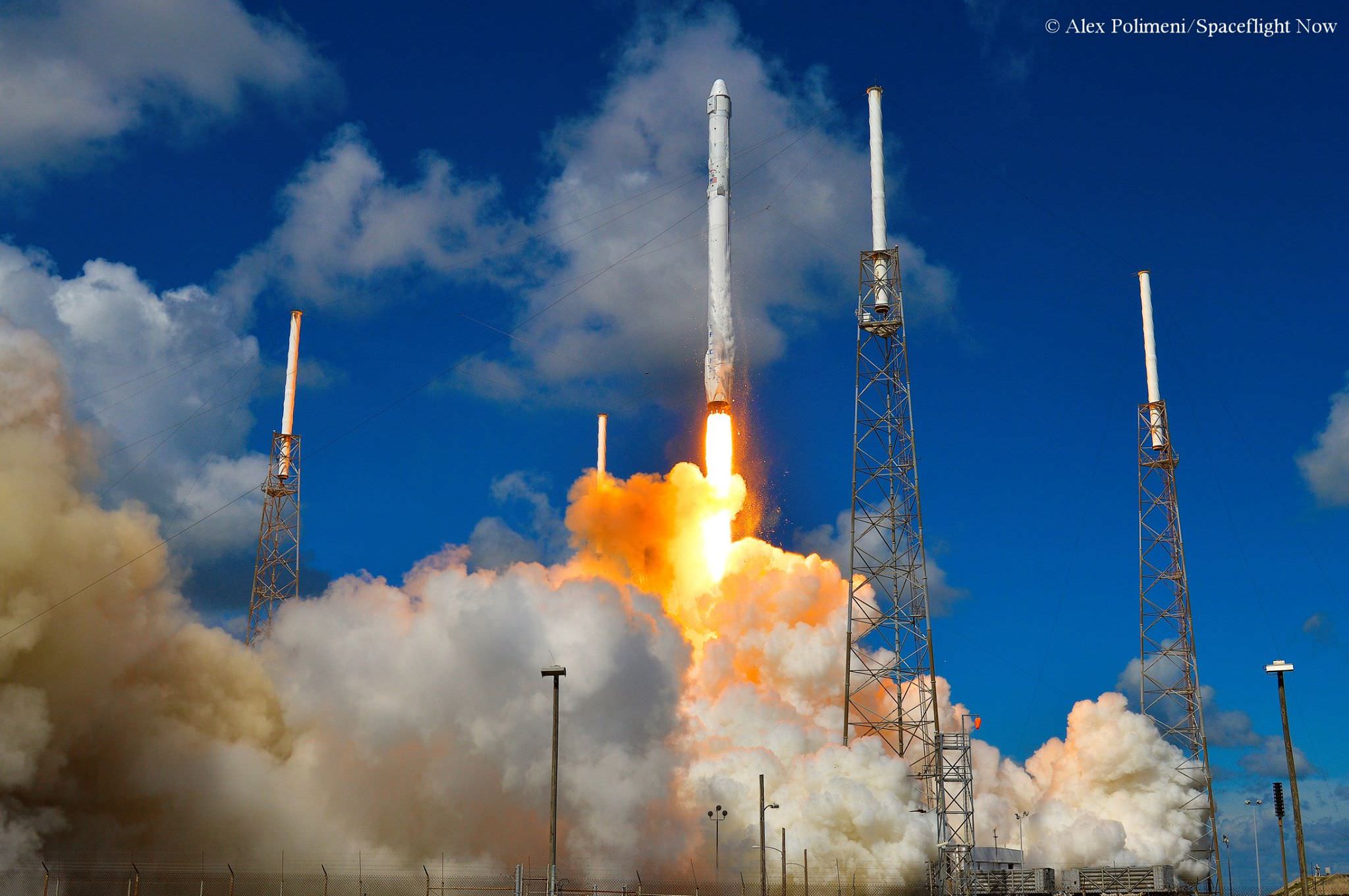
The Falcon 9 has transmitting data on over 3,000 channels of flight data streams.
But something went wrong apparently with the upper stage said SpaceX CEO Elon Musk.
“There was an overpressure event in the upper stage liquid oxygen tank. Data suggests counterintuitive cause,” tweeted Musk.
But why that happened and the vehicle disintegrated in mere seconds is still a mystery to be resolved through careful fault tree analysis of the data.
“Cause still unknown after several thousand engineering-hours of review. Now parsing data with a hex editor to recover final milliseconds.”
While SpaceX and Coast Guard ships have recovered some debris in the days since the launch mishap, the data streams are expected to be the most useful source of information to the investigation team.
Hex editors are being used to comb through the data.
A hex editor (or binary file editor or byte editor) is a type of computer program that allows for manipulation of the fundamental binary data that constitutes a computer file.
The name ‘hex’ comes from ‘hexadecimal’: a standard numerical format for representing binary data.
Some data was transmitted after the breakup.
The accident investigation teams are currently in the process of recreating the final milliseconds of the flight to give them some additional insights into what may have happened, when and why.
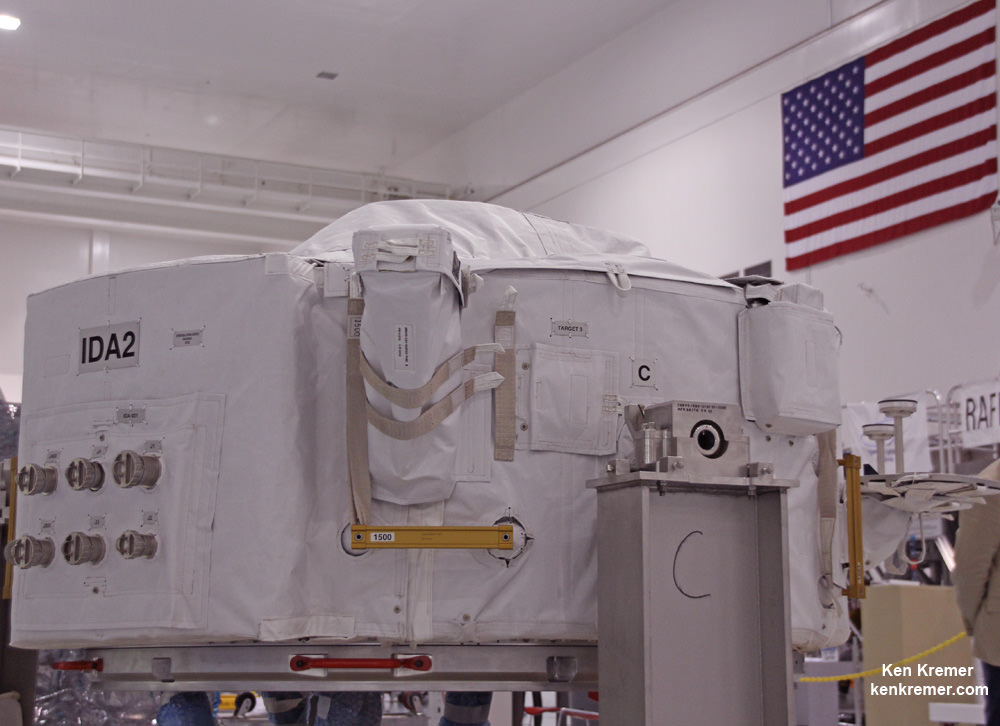
In the meantime all SpaceX launches are on hold for several months at least.
The next Falcon 9 launch scheduled was for NASA’s Jason 3 from Vandenberg Air Dorce Base in California
The next SpaceX cargo Dragon had been scheduled for liftoff in September 2015 on the CRS-8 mission, but is now postponed pending the results of the return to flight investigation.
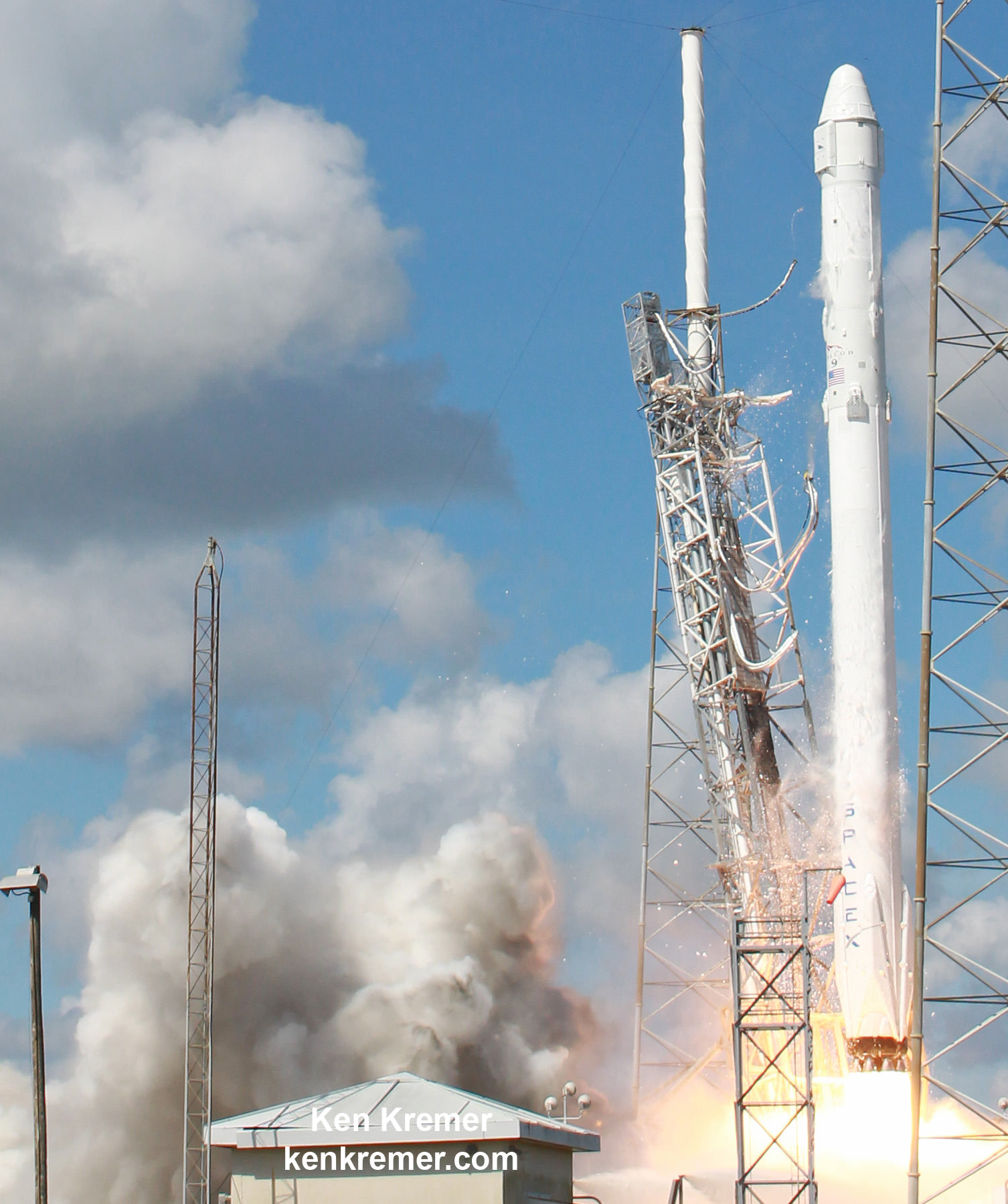
There are sufficient supplies on board the ISS to keep the crew continuing their mission until at least October 2015.
The SpaceX CRS-7 Dragon was loaded with over 4,000 pounds (1987 kg) of research experiments, an EVA spacesuit, water filtration equipment, spare parts, gear, computer equipment, high pressure tanks of oxygen and nitrogen supply gases, food, water and clothing for the astronaut and cosmonaut crews comprising Expeditions 44 and 45.
These included critical materials for the science and research investigations for the first ever one-year crew to serve aboard the ISS – comprising Scott Kelly and Mikhail Kornienko.
The Dragon was also packed with the first of two new International Docking Adapters (IDS’s) required for the new commercial crew space taxis to dock at the ISS starting in 2017.
Another Russian Progress vehicle is set to fly on the next resupply mission from the Baikonur Cosmodrome on Friday, July 3.
Stay tuned here for Ken’s continuing Earth and planetary science and human spaceflight news.
